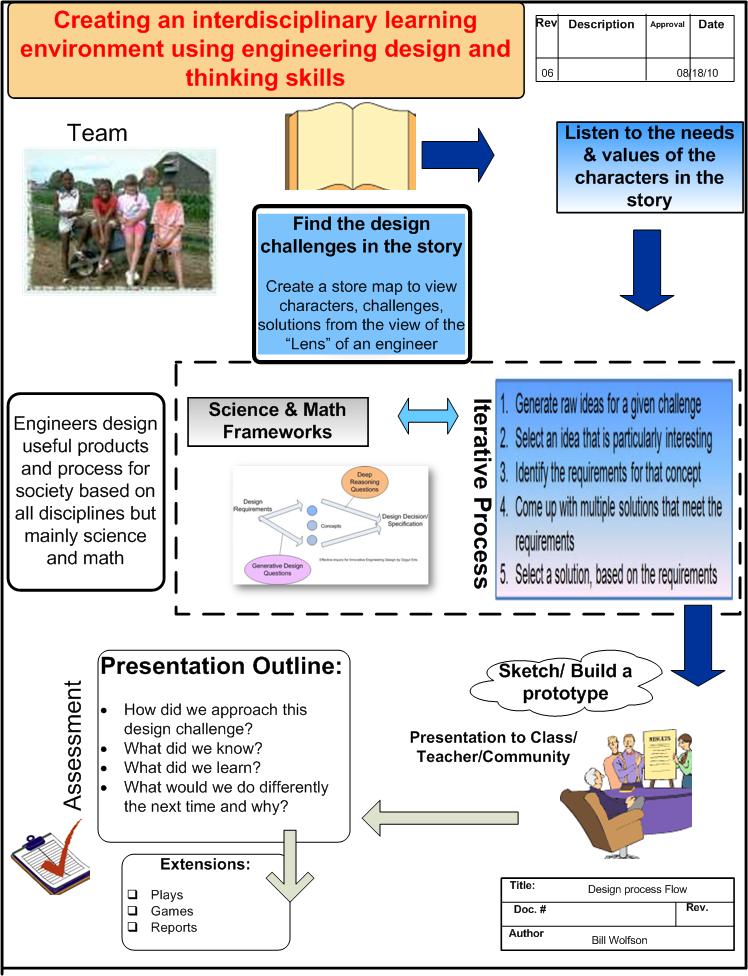| Getting started:
This
work-book is to help you navigate the process of facilitating a
project based learning experience for your students. Each section
gives you a discussion on the particular subject, templates and
examples to support your effort.
Use the buttons' in the top table to bring you to
the topic you want information about.
Getting started begins
with what objectives you
want to achieve with your students. This will support your setting
up with your students, rubrics and feedback methods for learning.
What
prior knowledge do my students need to know?
Using a story, you can find the design challenges
that allow the use of the design process and project based learning
to occur. You can steer the direction of the project by
using requirements to focus on the science, math and the overall
objects.
The exciting part, for you the teacher, is
combining the design process flow with the challenge from the
story and the learning styles of your students in a learning
environment that engages and excites the students.
Have Fun and enjoy the learning!
|
![]()
